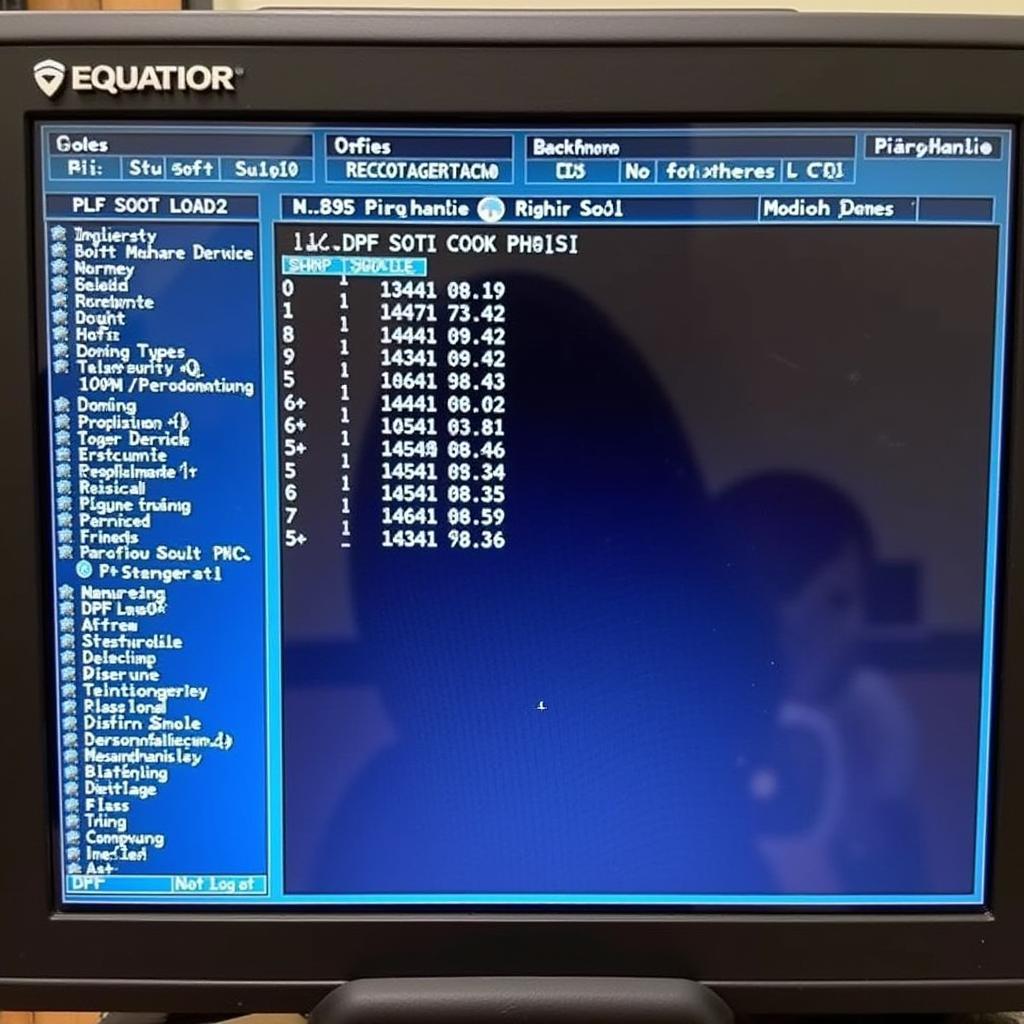Your cart is currently empty!

How to Start DPF Regeneration VCDS
Diesel Particulate Filters (DPFs) are essential for modern diesel engines, trapping harmful soot particles to keep emissions low. However, over time, these filters can become clogged, hindering performance. Knowing how to start DPF regeneration VCDS is a valuable skill for any car owner or mechanic dealing with diesel vehicles. This guide will walk you through the process, explaining the intricacies and common pitfalls.
After identifying a clogged DPF, initiating a regeneration using VCDS diagnostic software can be the most effective solution. But before diving into the software, understanding the underlying principles is crucial. A DPF regeneration essentially burns off the accumulated soot, converting it into ash and releasing it through the exhaust. This process requires specific conditions, like optimal engine temperature and a sufficient fuel level. The VCDS software allows you to monitor these parameters and initiate the regeneration process safely. For instance, the VCDS DPF Soot Level Reset can be a valuable tool in this process.
Understanding DPF Regeneration with VCDS
DPF regeneration is not a one-size-fits-all procedure. Different vehicles and even different DPF systems within the same vehicle model can have slightly different requirements. VCDS allows you to access the specific parameters for your vehicle and tailor the regeneration process accordingly.
Why is VCDS Important for DPF Regeneration?
VCDS provides a direct interface to your car’s engine control unit (ECU). This allows you to monitor the DPF’s soot load, temperature, and other critical parameters in real-time. This is crucial for ensuring a successful regeneration and avoiding potential damage to the DPF.
- Monitoring Soot Load: VCDS allows you to accurately measure the soot load in the DPF, determining if regeneration is necessary.
- Initiating Regeneration: You can trigger a forced regeneration using VCDS, even if the car’s onboard system hasn’t initiated it automatically.
- Troubleshooting: VCDS can help diagnose underlying issues that may be hindering passive regeneration.
 Monitoring DPF Regeneration with VCDS
Monitoring DPF Regeneration with VCDS
How to Start DPF Regeneration Using VCDS: A Step-by-Step Guide
Before you begin, ensure your vehicle has sufficient fuel (at least a quarter tank) and is parked in a well-ventilated area. Safety is paramount when performing DPF regeneration.
- Connect VCDS: Plug the VCDS cable into your car’s OBD-II port and launch the software on your laptop.
- Select Control Module: Navigate to the “Engine” control module within the VCDS software.
- Access Advanced Functions: Look for the “Advanced Functions” or “Basic Settings” option within the Engine module.
- Initiate Regeneration: Select the “DPF Regeneration” option. The specific wording may vary depending on your vehicle’s make and model. Follow the on-screen prompts carefully.
- Monitor the Process: Observe the DPF soot load, temperature, and other parameters displayed by VCDS. The regeneration process can take up to 30 minutes.
- Verify Completion: Once the regeneration is complete, VCDS will indicate a successful completion status. Check the soot load to confirm it has decreased significantly.
You might find resources online specific to your car model, such as VCDS 2013 Jetta TDI, for more detailed instructions.
Troubleshooting Common DPF Regeneration Issues
Sometimes, the regeneration process may not complete successfully. Here are a few common issues and their solutions:
- Interrupted Regeneration: If the process is interrupted, try restarting it from the beginning. Ensure the vehicle remains undisturbed during the entire process.
- Insufficient Fuel: Low fuel levels can prevent regeneration. Top up the fuel tank and try again.
- Faulty Sensors: Malfunctioning sensors can provide inaccurate data to the ECU, hindering regeneration. Use VCDS to diagnose sensor issues. You can also refer to VCDS Brake Service Mode for any brake related issues.
For stationary regeneration, you might find VCDS DPF regeneration im Stand helpful. Understanding these nuances can save you time and prevent potential damage to your vehicle’s DPF. If you are working on a Skoda, you may find specific tools like Skoda VCDS Tool particularly useful.
Conclusion
Knowing how to start DPF regeneration VCDS is a powerful tool for maintaining the health and performance of your diesel engine. By following the steps outlined in this guide and understanding the underlying principles, you can effectively manage DPF regeneration and avoid costly repairs. Remember, regular maintenance and timely regeneration are essential for maximizing the lifespan of your DPF. For further assistance and expert advice, please contact us at +1 (641) 206-8880 and our email address: vcdstool@gmail.com or visit our office at 6719 W 70th Ave, Arvada, CO 80003, USA. We at vcdstool are dedicated to providing comprehensive support for all your VCDS needs.
by
Tags:
Leave a Reply